Updated: 26-Sep-2023
He is not exactly a builder of aviation engines, but he is a promoter of ideas about them.
-He was a person of great fortune in Brazil and spent his “dolce vita” in Paris.
-He was a great fan of the sports of his time, and he stood out in his aerial achievements.
-First with airships, because in 1898 he began to build one with an oil engine.
-For the propulsion of his first airship (and No. 2 and No. 3), he devised the coupling of two DeDion-Bouton single-cylinder engines, attached to a basket with a propeller, tank and installations.
-For more details about this engine, see the DeDion-Bouton chapter.

“Santos Airship No. 1”
-The crew member was inside this wicker basket.

“Basket of airships 1, 2 and 3”
-As we already saw in the DeDion-Bouton chapter, these two engines were superimposed with the aim of doubling the power. The two pistons were joined by a rod that penetrated the upper cylinder. In the accompanying illustrations we see the propeller as two large blades. It had a total power of 3.5 CV.
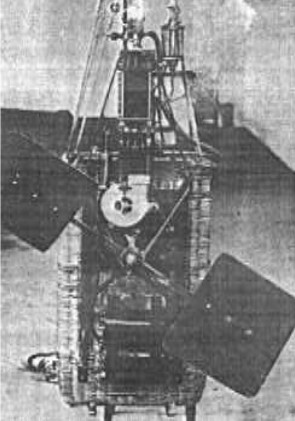
“Double engine of the Santos airship”
-He adapts a water-cooled engine with fins to eliminate weight. It gives 55 HP and it powers his number 5 airship.
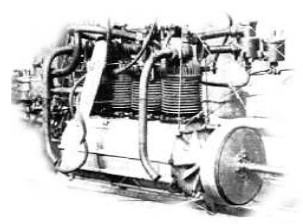
“Airship nº 5 engine”
-In 1901, with his airship No. 6 he won a prize equivalent to 10,000 pounds donated by Deutsch de la Meurthe for flying from the Parc de Aerostation in Saint Cloud, around the Eiffel Tower, and back, which he did in half an hour. As in No. 5, the engine was an adapted automobile one.
-On his famous 14bis (in 1906) he initially used a 24 HP engine, changing it later for a 50 HP Antoinette.
-In 1907 he made the first version of the Demoiselle with two propellers and a fan for the engine. It had the number 19 on the steering gear.
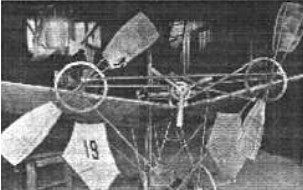
“Demoiselle, 19 with two propellers”
-A bar joins the two propeller shafts and a transmission belt goes directly to one and crossed to the other so that the two propellers rotate in the opposite direction.
-Actually the Demoiselle 19 was the prototype of the Demoiselle no. 20, with a Dutheil et Chalmers (Darracq) engine.
-No. 19 had an accident in Buc, near Versailles and was wrecked, in favor of the single-propeller No. 20.
From Appendix 10: In the following photo located in a publication after 1901, we see Santos-Dumont with a collaborator in front of part of the gondola for the Buchet engine that was adapted for his airship (No. 5 or 6, not clarified)
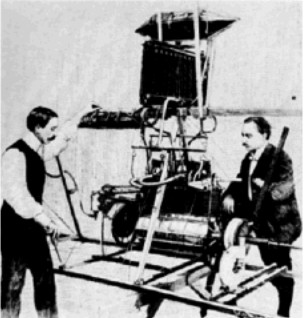
"Santos Dumont and a collaborator"
-The author can only make the following observation. If airship No. 5 had an air-cooled engine, as we see in the main text, it seems to be cooled by water - through the upper radiator - and the fuel tank above it. (Or water supply tank).
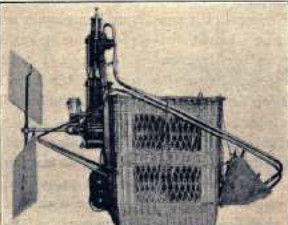
"Classic basket photo"
-For the Santos Dumont airships numbers 1.2 and 3, a common basket was used with a special engine consisting of an original small single-cylinder DeDion-Bouton, designed in 1893 for installation on light vehicles and airplanes.
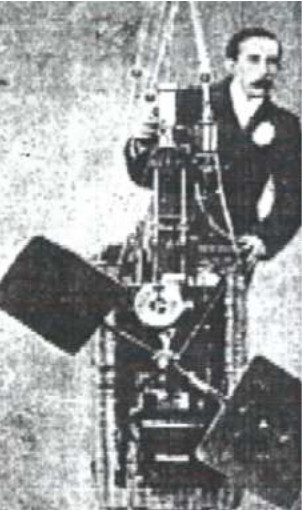
“Classic photo of Santos Dumont in his airship”
-The DeDion-Bouton engine was simple like all those of its time. With automatic intake and controlled exhaust valves.
-In the modification, a second cylinder was installed on top of the basic engine, and both pistons were joined by a rod.
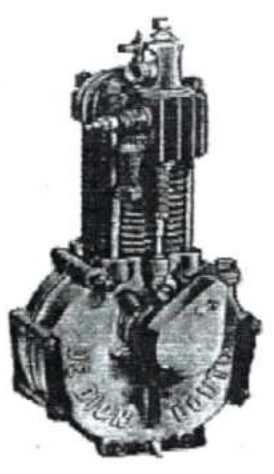
“DeDion-Bouton engine”
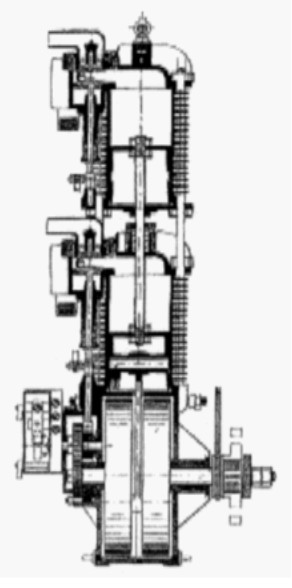
“The modified DeDion-Bouton engine”
Engines of SANTOS DUMONT
Model: Modified DeDion-Bouton
Arquitecture:
Cooling:
Total Displacement:
Bore / Stroke:
Power:
Weight:


